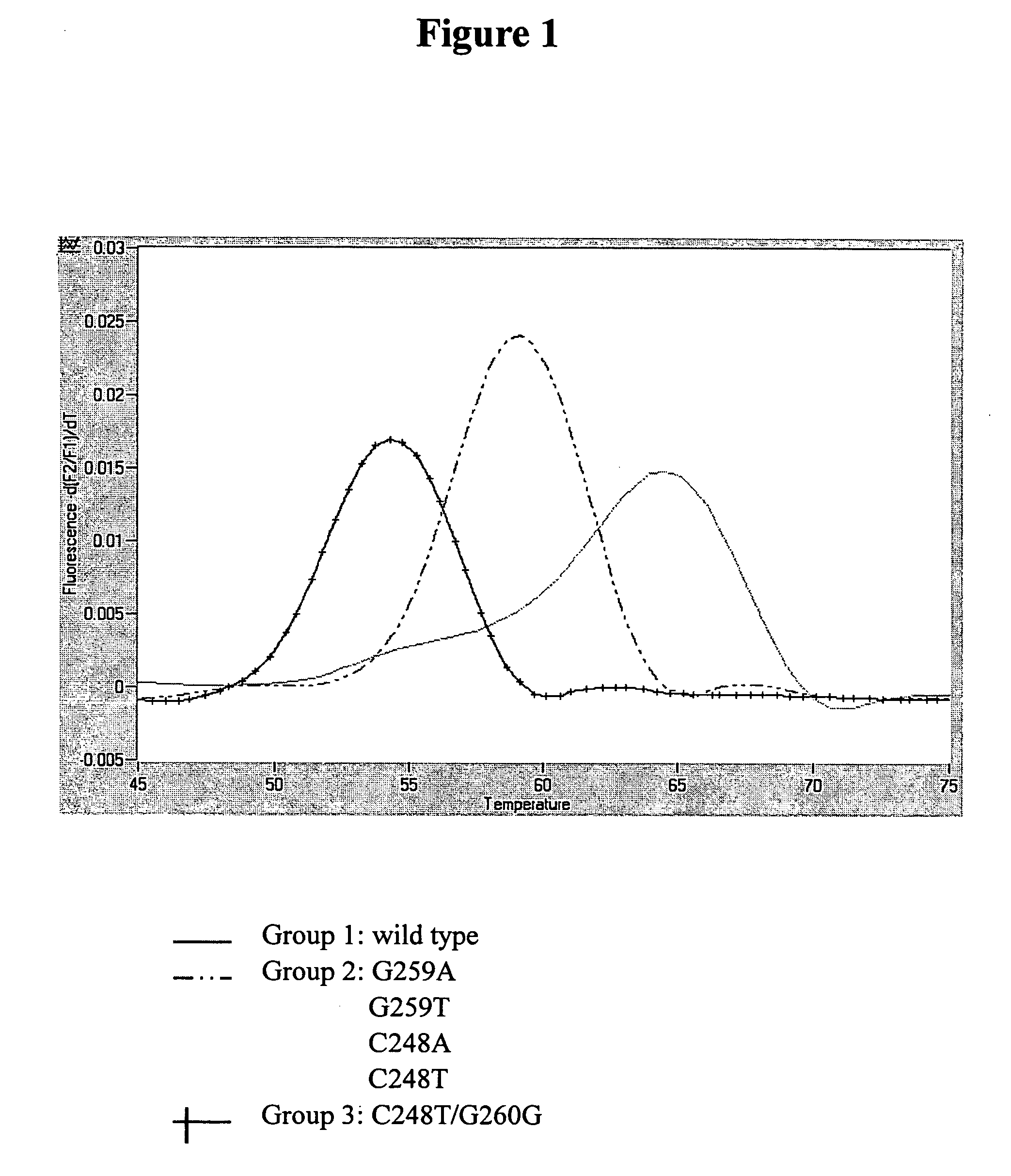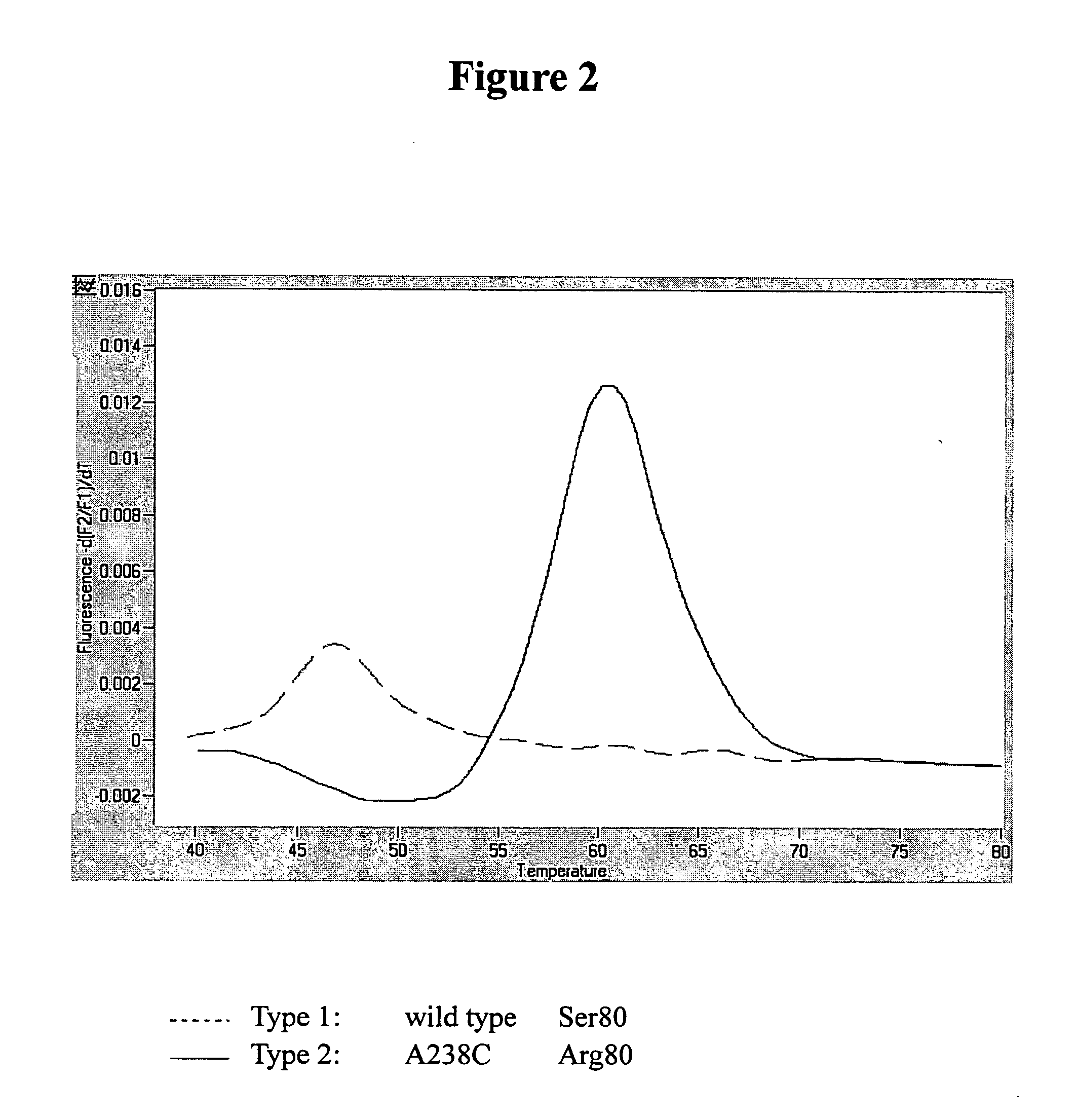Method for rapidly detecting quinolone-resistant Salmonella spp. and the probes and primers utilized therein
a technology of oligonucleotide primers and probes, which is applied in the field the probes utilized therein, can solve the problems of significant increase in strains, treatment failures, and standard dosages of said drugs for treatment that are not sufficient to treat clinical infections, etc., and achieve the effect of rapid detection of quinolone antibacterial resistant salmonella
- Summary
- Abstract
- Description
- Claims
- Application Information
AI Technical Summary
Benefits of technology
Problems solved by technology
Method used
Image
Examples
example 1
Detection of Resistance of Salmonella spp. to Quinolone Antibacterials and of Gene Mutations Therein
Determination of Minimum Inhibitory Concentration (MIC) of Quinolone Antibacterials
[0041] The minimum inhibitory concentration was determined by the E-test strips of quinolone antibacterials (AB BIODISC North America Inc., Solna, Sweden). The bacterial strain to be tested was streak plated on xylose lysin desoxycholate agar (XLD) (Merck kGaA, Darmstadt, Germany). After the purity of said strain was verified, the strain was grown on tryptic soy agar (TSA) medium (Merck kGaA, Darmstadt, Germany) at 35-37° C. for 16-18 hours and then suspended in sterile water. The bacterial concentration was adjusted to 80% of turbidity (corresponding to 0.5 MacFarland turbidity standard, and the bacterial content is approximately 107 CFU / ml) using Vitek Special DR 100 Colorimeter (HACH Company, Colorado, USA). Then, 0.1 ml of the bacterial aliquot was placed on the prepared Mueller-Hinton (M-H) aga...
example 2
Detection of gyrA and parC using Real-Time PCR Combined with Melting Curve Analysis
[0046] The bacterial strain to be tested was streak plated on XLD medium. After the purity of said strain was verified, the strain was grown in TSB broth at 35±1° C. for 18±2 hours. Following refrigerated centrifugation, Wizard® Genomic DNA Purification Kit was used to extract the genomic DNA. One microliter of the DNA extraction solution was added to the reaction mix (containing 0.5 μM primer set, 0.2 μM probe set, 4 mM MgCl2, and 1× LightCycler DNA Master hybridization mix) to a final volume of 20 μl, which was then placed in LightCycler (Roche Applied Science, Mannheim, Germany) for amplification and melting reaction of the hybrid of the PCR product with the hybridization probes. The conditions of the amplification and melting reactions are shown in Table 2.
Results
[0047] The gyrA-specifc primer set gyrA55 / gyrA330 in combination with the gyrA4 hybridization probe sets (including probes gyrA4-FL...
PUM
| Property | Measurement | Unit |
|---|---|---|
| Electrical resistance | aaaaa | aaaaa |
| Resonance energy | aaaaa | aaaaa |
| Fluorescence | aaaaa | aaaaa |
Abstract
Description
Claims
Application Information
 Login to View More
Login to View More - R&D
- Intellectual Property
- Life Sciences
- Materials
- Tech Scout
- Unparalleled Data Quality
- Higher Quality Content
- 60% Fewer Hallucinations
Browse by: Latest US Patents, China's latest patents, Technical Efficacy Thesaurus, Application Domain, Technology Topic, Popular Technical Reports.
© 2025 PatSnap. All rights reserved.Legal|Privacy policy|Modern Slavery Act Transparency Statement|Sitemap|About US| Contact US: help@patsnap.com


